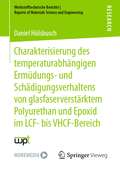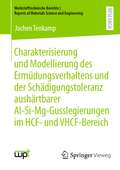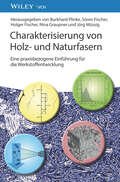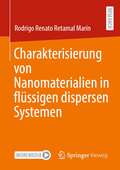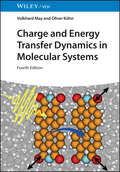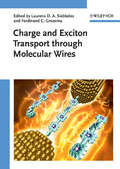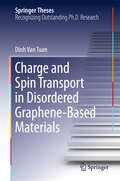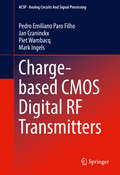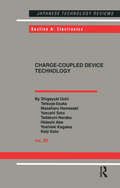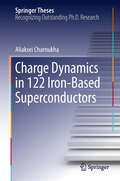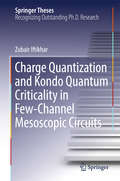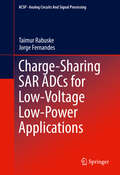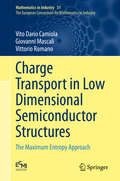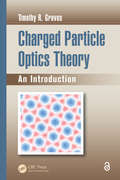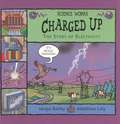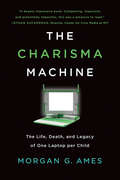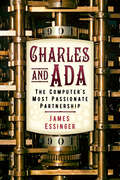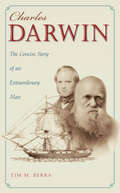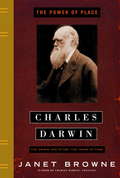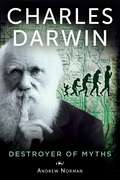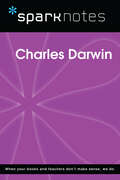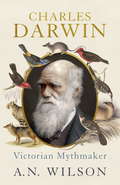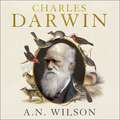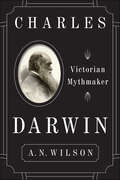- Table View
- List View
Charakterisierung des temperaturabhängigen Ermüdungs- und Schädigungsverhaltens von glasfaserverstärktem Polyurethan und Epoxid im LCF- bis VHCF-Bereich (Werkstofftechnische Berichte │ Reports of Materials Science and Engineering)
by Daniel HülsbuschDaniel Hülsbusch führt eine Charakterisierung des Ermüdungs- und Schädigungsverhaltens eines neuentwickelten glasfaserverstärkten Polyurethans ggü. eines glasfaserverstärkten Epoxids unter betriebsrelevanten Umgebungstemperaturen von -30 bis +70 °C durch. Im Zuge dessen werden Hochfrequenz-Prüfverfahren unter besonderer Berücksichtigung der Eigenerwärmung für den Einsatz an glasfaserverstärkten Kunststoffen weiterentwickelt, um die Materialeigenschaften bis in den VHCF-Bereich durch alternierende zyklische Beanspruchungen und in situ computertomographische Defektanalysen zu ermitteln. Die Ergebnisse dienen dem Verständnis über die material- und umgebungsabhängige Ausbildung der Ermüdungseigenschaften – insbesondere durch eine differenzierte Beschreibung der Schädigungsentwicklung im HCF- und VHCF-Bereich – und der darauf basierenden kontinuierlichen Restlebensdauerabschätzung. Die Erkenntnisse gewährleisten eine optimierte Ausnutzung der Leistungsfähigkeit und einen sicheren Betrieb langzeitbeanspruchter Strukturen aus glasfaserverstärkten Kunststoffen.Der AutorDaniel Hülsbusch ist als Oberingenieur am Fachgebiet Werkstoffprüftechnik (WPT) der Technischen Universität Dortmund tätig und schloss dort seine Promotion ab. Er bearbeitet wissenschaftliche Fragestellungen im Bereich der Charakterisierung des Verformungs- und Schädigungsverhaltens von Verbundwerkstoffen und Hybridstrukturen.
Charakterisierung und Modellierung des Ermüdungsverhaltens und der Schädigungstoleranz aushärtbarer Al-Si-Mg-Gusslegierungen im HCF- und VHCF-Bereich (Werkstofftechnische Berichte │ Reports of Materials Science and Engineering)
by Jochen TenkampJochen Tenkamp befasst sich mit der Charakterisierung und Modellierung des Ermüdungsverhaltens und der Schädigungstoleranz von im Kokillen- und Sandguss hergestellten AlSi7Mg0,3-Legierungen im HCF- und VHCF-Bereich. Die Schädigungsevolution wird über eine computertomografische Defektanalyse hochauflösend vom Ausgangszustand über Anriss bis zum Versagen erfasst und mit den struktursensitiven Messgrößen zwecks Kalibrierung korreliert. Die bruchmechanischen Modellierungsansätze ermöglichen eine lokale defektbasierte Betrachtung der Ermüdungsbeanspruchung. Das defektabhängige Ermüdungsverhalten im HCF- und VHCF-Bereich kann mit Hilfe des √area-Modell von Murakami-Noguchi, des Shiozawa-Modells für rissfortschrittsdominierte Werkstoffe und der El Haddad-Kurve mit Tanaka-Erweiterung im Kitagawa-Takahashi-Diagramm zuverlässig beschrieben werden. Die Erkenntnisse gewährleisten eine verbesserte Ausnutzung des Leistungsvermögens und Leichtbaupotentials, eine einheitliche Auslegung defektbehafteter Werkstoffe und dadurch einen sicheren Betrieb langzeitbeanspruchter Strukturen aus Aluminiumgusswerkstoffen im HCF- und VHCF-Bereich.
Charakterisierung von Holz- und Naturfasern: Eine praxisbezogene Einführung für die Werkstoffentwicklung
by Burkhard Plinke Sören Fischer Holger Fischer Nina Graupner Jörg MüssigCharakterisierung von Holz- und Naturfasern Charakterisierung von Holz- und Naturfasern: Eine praxisbezogene Einführung für die Werkstoffentwicklung bietet zum ersten Mal eine umfassende Einarbeitung in das komplexe Themengebiet der Faseranalytik. Die Entwicklung moderner und fortgeschrittener Faserverbundwerkstoffe ist von großer Bedeutung, da sie den Anforderungen an Wirtschaftlichkeit, Ökologie und Funktionalität gerecht werden und vielseitig in Bereichen wie z.B. Kunststoff, Fahrzeuge, Luft- und Raumfahrt eingesetzt werden. Das steigende Interesse an neuen Werkstoffen macht ein gründliches und ausführliches Verständnis der Interaktionen von Faser-Matrix-Systemen und detaillierte Betrachtungen der verwendeten Fasern durch angemessene Analysemethoden und Auslegung der Messergebnisse unerlässlich, um präzise Vorhersagen über Eigenschaften der Verbundwerkstoffe machen zu können. Neben den wichtigsten Herstellungsverfahren von Werkstoffen aus Holz- und Naturfasern, sowie den entsprechenden Grundlagen und Normen, werden wichtige Analyseverfahren anwendungsbezogen beschrieben. Im Focus stehen besonders bild-gebende Methoden und die entsprechenden, am Markt etablierten Analysegeräte, die zur morphologischen Charakterisierung der Fasern eingesetzt werden. Dabei werden nicht nur Anwendungsbeispiele mit praktischer Relevanz betrachtet, sondern auch die Simulation und Modellierung zur Vorhersage von möglichen Faserstrukturen. An diversen Praxisbeispielen werden die Methoden der Faseranalytik anwen-dungsbezogen und verständlich erläutert. Von den Grundlagen über die Methoden bis hin zu den Praxisbeispielen???gut strukturiert wird den Leser:innen alles Wissenswerte über die Charakteri-sierung und Analyse von Fasern vermittelt. Ein schneller Einstieg in die Methoden der modernen Faseranalytik: Das Buch unterstützt den Anwender bei der Durchführung der Verfahren und der Interpretation der Analysenergebnisse. Die Autor:innen sind ausgewiesene Expert:innen, die durch ihre wissenschaftli-chen Fachkenntnisse und ihre praxisnahe Forschung überzeugen, und sich aktivfür die Vermittlung von Wissen im Bereich der Faseranalytik einsetzen. Herausgegeben von: Burkhard Plinke — ehem. Fraunhofer—Institut für Holzforschung WKI, Braunschweig Sören Fischer — Continental Holger Fischer — Faserinstitut Bremen Nina Graupner, Jörg Müssig — Hochschule Bremen, Fachrichtung Bionik, AG Biologische Werkstoffe Alle Herausgebenden, Autorinnen und Autoren werden am Ende des Buches vorgestellt.
Charakterisierung von Nanomaterialien in flüssigen dispersen Systemen
by Rodrigo Renato Retamal MarínHäufig liegen natürliche und technische partikuläre Nanomaterialien (NM) in Formulierungen (i.d.R. Suspensionen, Emulsionen oder Suspoemulsionen) und Produkten vor, welche aus mehreren dispersen Phasen und komplexen Dispersionsmedien bestehen. Dabei gilt es, spezifische Grenzflächeneigenschaften der Partikel, ihre Wechselwirkungen untereinander und mit dem Dispersionsmedium zu berücksichtigen. Beispielsweise bestimmen die Grenzflächeneigenschaften, ob sich die Partikel eher in wässriger Phase oder in Lipidphase bzw. an deren Phasengrenzen anordnen. Die Grenzflächeneigenschaften werden maßgeblich durch die Adsorption gelöster Spezies beeinflusst, hängen also von der Zusammensetzung des Dispersionsmediums ab. In dieser Arbeit werden mit theoretischer und empirischer Forschung wie methodischer Vorgehensweise neue Beiträge zur Nanopartikelcharakterisierung erarbeitet. Die notwendige Ausarbeitung von Richtlinien an SOPs für die Charakterisierung von Nanopartikelsystemen wird hierbei berücksichtigt. Diese Richtlinien ermöglichen eine Anwendung im Kontext verschiedenartiger Analyseaufgaben, und die Ergebnisse können dem Leser dieser Arbeit unmittelbar Nutzen bringen.
Charge and Energy Transfer Dynamics in Molecular Systems
by Volkhard May Oliver KühnCharge and Energy Transfer Dynamics in Molecular Systems Comprehensive resource offering knowledge on charge and energy transfer dynamics in molecular systems and nanostructures Charge and Energy Transfer Dynamics in Molecular Systems provides a unified description of different charge and energy transfer phenomena in molecular systems with emphasis on the theory, bridging the regimes of coherent and dissipative dynamics and thus presenting classic rate theories as well as modern treatments of ultrafast phenomena. Starting from microscopic models, the common features of the different transfer processes are highlighted, along with applications ranging from vibrational energy flow in large polyatomic molecules, the motion of protons in solution, up to the concerted dynamics of electronic and nuclear degrees of freedom in molecules and molecular aggregates. The newly revised and updated Fourth Edition contains a more detailed coverage of recent developments in density matrix theory, mixed quantum-classical methods for dynamics simulations, and a substantially expanded treatment of time-resolved spectroscopy. The book is written in an easy-to-follow style, including detailed mathematical derivations, thus making even complex concepts understandable and applicable. Charge and Energy Transfer Dynamics in Molecular Systems includes information on: Electronic and vibrational molecular states, covering molecular Schrödinger equation, Born—Oppenheimer separation and approximation, Hartree-Fock equations and other electronic structure methods Dynamics of isolated and open quantum systems, covering multidimensional wave packet dynamics, and different variants of density operator equations Interaction of molecular systems with radiation fields, covering linear and nonlinear optical response using the correlation function approach Intramolecular electronic transitions, covering optical transition and internal conversion processes Transfer processes of electrons, protons, and electronic excitation energy Providing in-depth coverage of the subject, Charge and Energy Transfer Dynamics in Molecular Systems is an essential resource for anyone working on timely problems of energy and charge transfer in physics, chemistry and biophysics as well as for all engaged in nanoscience and organic electronics.
Charge and Exciton Transport through Molecular Wires
by Laurens D. A. Siebbeles et al.As functional elements in opto-electronic devices approach the singlemolecule limit, conducting organic molecular wires are the appropriate interconnects that enable transport of charges and charge-like particles such as excitons within the device. Reproducible syntheses and a thorough understanding of the underlying principles are therefore indispensable for applications like even smaller transistors, molecular machines and light-harvesting materials. Bringing together experiment and theory to enable applications in real-life devices, this handbook and ready reference provides essential information on how to control and direct charge transport. Readers can therefore obtain a balanced view of charge and exciton transport, covering characterization techniques such as spectroscopy and current measurements together with quantitative models. Researchers are thus able to improve the performance of newly developed devices, while an additional overview of synthesis methods highlights ways of producing different organic wires. Written with the following market in mind: chemists, molecular physicists, materials scientists and electrical engineers.
Charge and Spin Transport in Disordered Graphene-Based Materials (Springer Theses)
by Dinh TuanThis thesis presents an in-depth theoretical analysis of charge and spin transport properties in complex forms of disordered graphene. It relies on innovative real space computational methods of the time-dependent spreading of electronic wave packets. First a universal scaling law of the elastic mean free path versus the average grain size is predicted for polycrystalline morphologies, and charge mobilities of up to 300. 000 cm2/V. s are determined for 1 micron grain size, while amorphous graphene membranes are shown to behave as Anderson insulators. An unprecedented spin relaxation mechanism, unique to graphene and driven by spin/pseudospin entanglement is then reported in the presence of weak spin-orbit interaction (gold ad-atom impurities) together with the prediction of a crossover from a quantum spin Hall Effect to spin Hall effect (for thallium ad-atoms), depending on the degree of surface ad-atom segregation and the resulting island diameter.
Charge-based CMOS Digital RF Transmitters (Analog Circuits and Signal Processing)
by Piet Wambacq Pedro Emiliano Paro Filho Jan Craninckx Mark IngelsThis book introduces a completely novel architecture that can relax the trade-off existing today between noise, power and area consumption in a very suitable solution for advanced wireless communication systems. Through the combination of charge-domain operation with incremental signaling, this architecture gives the best of both worlds, providing the reduced area and high portability of digital-intensive architectures with an improved out-of-band noise performance given by intrinsic noise filtering capabilities. Readers will be enabled to design higher performance radio front-ends that consume less power and area, especially with respect to the transmitter and power amplifier designs, considered by many the battery killers on most mobile devices. "
Charge-Coupled Device Technology
by Shigeyuki Ochi Tetsuya Iizuka Masaharu Hamasaki Yasushi Sato Tadakuni Narabu Hideshi Abe Yoshiaki Kagawa Keiji KatoThis title contains the most up-to-date and comprehensive information on the development of the Charge-Coupled Device (CCD), which makes possible the widespread use of consumer camcorders and broadcasting color cameras. It is comprehensive enough to be of great value to researchers, industrialists and post-graduate students in image technology.
Charge Dynamics in 122 Iron-Based Superconductors (Springer Theses)
by Aliaksei CharnukhaThis thesis combines highly accurate optical spectroscopy data on the recently discovered iron-based high-temperature superconductors with an incisive theoretical analysis. Three outstanding results are reported: (1) The superconductivity-induced modification of the far-infrared conductivity of an iron arsenide with minimal chemical disorder is quantitatively described by means of a strong-coupling theory for spinfluctuation mediated Cooper pairing. The formalism developed in this thesis also describes prior spectroscopic data on more disordered compounds. (2) The same materials exhibit a sharp superconductivity-induced anomaly for photon energies around 2. 5 eV, two orders of magnitude larger than the superconducting energy gap. The author provides a qualitative interpretation of this unprecedented observation, which is based on the multiband nature of the superconducting state. (3) The thesis also develops a comprehensive description of a superconducting, yet optically transparent iron chalcogenide compound. The author shows that this highly unusual behavior can be explained as a result of the nanoscopic coexistence of insulating and superconducting phases, and he uses a combination of two complementary experimental methods - scanning near-field optical microscopy and low-energy muon spin rotation - to directly image the phase coexistence and quantitatively determine the phase composition. These data have important implications for the interpretation of data from other experimental probes.
Charge Quantization and Kondo Quantum Criticality in Few-Channel Mesoscopic Circuits (Springer Theses)
by Zubair IftikharThis thesis explores several fundamental topics in mesoscopic circuitries that incorporate few electronic conduction channels. It reports a series of long-awaited experiments that establish a new state of the art. The first experiments address the quantized character of charge in circuits. We demonstrate the charge quantization criterion, observe the predicted charge quantization scaling and a crossover toward a universal behavior as temperature is increased. The second set of experiments addresses the unconventional quantum critical physics that arises in the multichannel Kondo model. We observe the predicted universal Kondo fixed points and validate the numerical renormalization group scaling curves. Away from the quantum critical point, we obtain a direct visualization of the development of a second-order quantum phase transition.
Charge-Sharing SAR ADCs for Low-Voltage Low-Power Applications (Analog Circuits and Signal Processing)
by Taimur Rabuske Jorge FernandesThis book introduces readers to the potential of charge-sharing (CS) successive approximation register (SAR) analog-to-digital converters (ADCs), while providing extensive analysis of the factors that limit the performance of the CS topology. The authors present guidelines and useful techniques for mitigating the limitations of the architecture, while focusing on the implementation under restricted power budgets and voltage supplies.
Charge Transport in Low Dimensional Semiconductor Structures: The Maximum Entropy Approach (Mathematics in Industry #31)
by Vittorio Romano Vito Dario Camiola Giovanni MascaliThis book offers, from both a theoretical and a computational perspective, an analysis of macroscopic mathematical models for description of charge transport in electronic devices, in particular in the presence of confining effects, such as in the double gate MOSFET. The models are derived from the semiclassical Boltzmann equation by means of the moment method and are closed by resorting to the maximum entropy principle. In the case of confinement, electrons are treated as waves in the confining direction by solving a one-dimensional Schrödinger equation obtaining subbands, while the longitudinal transport of subband electrons is described semiclassically. Limiting energy-transport and drift-diffusion models are also obtained by using suitable scaling procedures. An entire chapter in the book is dedicated to a promising new material like graphene. The models appear to be sound and sufficiently accurate for systematic use in computer-aided design simulators for complex electron devices. The book is addressed to applied mathematicians, physicists, and electronic engineers. It is written for graduate or PhD readers but the opening chapter contains a modicum of semiconductor physics, making it self-consistent and useful also for undergraduate students.
Charged Particle Optics Theory: An Introduction (Optical Sciences and Applications of Light #1)
by Timothy R. GrovesCharged Particle Optics Theory: An Introduction identifies the most important concepts of charged particle optics theory, and derives each mathematically from the first principles of physics. Assuming an advanced undergraduate-level understanding of calculus, this book follows a logical progression, with each concept building upon the preceding one. Beginning with a non-mathematical survey of the optical nature of a charged particle beam, the text:Discusses both geometrical and wave optics, as well as the correspondence between themDescribes the two-body scattering problem, which is essential to the interaction of a fast charged particle with matterIntroduces electron emission as a practical consequence of quantum mechanicsAddresses the Fourier transform and the linear second-order differential equationIncludes problems to amplify and fill in the theoretical details, with solutions presented separatelyCharged Particle Optics Theory: An Introduction makes an ideal textbook as well as a convenient reference on the theoretical origins of the optics of charged particle beams. It is intended to prepare the reader to understand the large body of published research in this mature field, with the end result translated immediately to practical application.
Charged Up: The Story Of Electricity (Science Works)
by Jacqui BaileyDescribes how electrical energy is generated in power stations and how it travels through pylons, power cables, and wires into people's homes.
The Charisma Machine: The Life, Death, and Legacy of One Laptop per Child (Infrastructures)
by Morgan G. AmesA fascinating examination of technological utopianism and its complicated consequences.In The Charisma Machine, Morgan Ames chronicles the life and legacy of the One Laptop per Child project and explains why—despite its failures—the same utopian visions that inspired OLPC still motivate other projects trying to use technology to “disrupt” education and development. Announced in 2005 by MIT Media Lab cofounder Nicholas Negroponte, One Laptop per Child promised to transform the lives of children across the Global South with a small, sturdy, and cheap laptop computer, powered by a hand crank. In reality, the project fell short in many ways—starting with the hand crank, which never materialized. Yet the project remained charismatic to many who were captivated by its claims of access to educational opportunities previously out of reach. Behind its promises, OLPC, like many technology projects that make similarly grand claims, had a fundamentally flawed vision of who the computer was made for and what role technology should play in learning.Drawing on fifty years of history and a seven-month study of a model OLPC project in Paraguay, Ames reveals that the laptops were not only frustrating to use, easy to break, and hard to repair, they were designed for “technically precocious boys”—idealized younger versions of the developers themselves—rather than the children who were actually using them. The Charisma Machine offers a cautionary tale about the allure of technology hype and the problems that result when utopian dreams drive technology development.
Charles and Ada: The Computer's Most Passionate Partnership
by James Essinger Lisa Noel BabbageThe partnership of Charles Babbage and Ada Lovelace was one that would change science forever. They were an unlikely pair – one the professor son of a banker, the other the only child of an acclaimed poet and a social-reforming mathematician – but perhaps that is why their work was so revolutionary. They were the pioneers of computer science, creating plans for what could have been the first computer. They each saw things the other did not: it may have been Charles who designed the machines, but it was Ada who could see their potential. But what were they like? And how did they work together? Using previously unpublished correspondence between them, Charles and Ada explores the relationship between two remarkable people who shared dreams far ahead of their time.
Charles Darwin: The Concise Story of an Extraordinary Man
by Tim M. BerraTwo hundred years after Charles Darwin's birth (February 12, 1809), this thoroughly illustrated, yet concise biography reveals the great scientist as husband, father, and friend. Tim M. Berra, whose "Darwin: The Man" lectures are in high demand worldwide, tells the fascinating story of the person and the idea that changed everything. Berra discusses Darwin’s revolutionary scientific work, its impact on modern-day biological science, and the influence of Darwin’s evolutionary theory on Western thought. But Berra digs deeper to reveal Darwin the man by combining anecdotes with carefully selected illustrations and photographs. This small gem of a book includes 20 color plates and 60 black-and-white illustrations, along with an annotated list of Darwin’s publications and a chronology of his life.
Charles Darwin: The Concise Story of an Extraordinary Man
by Tim M. BerraA brief biography of English naturalist responsible for the advancement of the science of evolution.Two hundred years after Charles Darwin’s birth (February 12, 1809), this thoroughly illustrated, yet concise biography reveals the great scientist as husband, father, and friend.Tim M. Berra tells the fascinating story of the man and the idea that changed everything. Berra discusses Darwin’s revolutionary scientific work, its impact on modern-day biological science, and the influence of Darwin’s evolutionary theory on Western thought. But Berra digs deeper to reveal Darwin the man by combining anecdotes with carefully selected illustrations and photographs.This small gem of a book includes 20 color plates and 60 black-and-white illustrations, along with an annotated list of Darwin’s publications and a chronology of his life.“Berra meets the essential curiosities a reader new to Darwin will have about a scientist still controversial in some quarters: Berra describes Darwin’s wealthy family background; notes his search for a purpose in life, which led to his embarkation on the survey ship HMS Beagle; chronicles Darwin’s fabled voyage on that ship; steers Darwin into his happy marriage to an heiress to the Wedgwood pottery fortune; and recounts the éclat with which On the Origin of Species burst upon the world in 1859. . . . A finer asset of this volume is its abundance of portraits and illustrations, including a suite of photos taken by Berra of Darwin’s home.” —Booklist
Charles Darwin: The Power of Place
by Janet BrowneIn 1858 Charles Darwin was forty-nine years old, a gentleman scientist living quietly at Down House in the Kent countryside, respected by fellow biologists and well liked among his wide and distinguished circle of acquaintances. He was not yet a focus of debate; his "big book on species" still lay on his study desk in the form of a huge pile of manuscript. For more than twenty years he had been accumulating material for it, puzzling over questions it raised, trying--it seemed endlessly--to bring it to a satisfactory conclusion. Publication appeared to be as far away as ever, delayed by his inherent cautiousness and wish to be certain that his startling theory of evolution was correct.It is at this point that the concluding volume of Janet Browne's biography opens. The much-praised first volume, Voyaging, carried Darwin's story through his youth and scientific apprenticeship, the adventurous Beagle voyage, his marriage and the birth of his children, the genesis and development of his ideas. Now, beginning with the extraordinary events that finally forced the Origin of Species into print, we come to the years of fame and controversy.For Charles Darwin, the intellectual upheaval touched off by his book had deep personal as well as public consequences. Always an intensely private man, he suddenly found himself and his ideas being discussed--and often attacked--in circles far beyond those of his familiar scientific community. Demonized by some, defended by others (including such brilliant supporters as Thomas Henry Huxley and Joseph Hooker), he soon emerged as one of the leading thinkers of the Victorian era, a man whose theories played a major role in shaping the modern world. Yet, in spite of the enormous new pressures, he clung firmly, sometimes painfully, to the quiet things that had always meant the most to him--his family, his research, his network of correspondents, his peaceful life at Down House. In her account of this second half of Darwin's life, Janet Browne does dramatic justice to all aspects of the Darwinian revolution, from a fascinating examination of the Victorian publishing scene to a survey of the often furious debates between scientists and churchmen over evolutionary theory. At the same time, she presents a wonderfully sympathetic and authoritative picture of Darwin himself right through the heart of the Darwinian revolution, busily sending and receiving letters, pursuing research on subjects that fascinated him (climbing plants, earthworms, pigeons--and, of course, the nature of evolution), writing books, and contending with his mysterious, intractable ill health. Thanks to Browne's unparalleled command of the scientific and scholarly sources, we ultimately see Darwin more clearly than we ever have before, a man confirmed in greatness but endearingly human.Reviewing Voyaging, Geoffrey Moorhouse observed that "if Browne's second volume is as comprehensively lucid as her first, there will be no need for anyone to write another word on Darwin." The Power of Place triumphantly justifies that praise.From the Hardcover edition.
Charles Darwin: Destroyer of Myths
by Andrew NormanCharles Darwin did not deliberately set out to be the "destroyer of mythical beliefs," some of which, in his early days as a young Christian, he had previously espoused. He was a modest man who liked to avoid controversy of any kind, yet paradoxically, he was to be the cause of the greatest controversy in the history of science and religion.When Darwin embarked on the HMS Beagle in late December 1831, bound for the southern hemisphere, he could not have imagined that the experience would lead him to formulate a theory which would totally revolutionize the way in which we viewed the natural world. He did not come to his conclusions about the origin and evolution of all life on Earth quickly, though, for just as the living organisms to which his theory applied had evolved over millions of years, so his thinking evolved as his own life progressed.How did this thoughtful, methodical scientist come to have such an impact on his time-and on ours? These questions and more are what Andrew Norman seeks to answer in this biography of the author of The Origin of Species.
Charles Darwin (SparkNotes Biography Guide)
by SparkNotesCharles Darwin (SparkNotes Biography Guide) Making the reading experience fun! SparkNotes Biography Guides examine the lives of historical luminaries, from Alexander the Great to Virginia Woolf. Each biography guide includes:An examination of the historical context in which the person lived A summary of the person&’s life and achievements A glossary of important terms, people, and events An in-depth look at the key epochs in the person&’s career Study questions and essay topics A review test Suggestions for further reading Whether you&’re a student of history or just a student cramming for a history exam, SparkNotes Biography guides are a reliable, thorough, and readable resource.
Charles Darwin: Victorian Mythmaker
by A N Wilson'Hugely enjoyable' - Spectator'A lucid, elegantly written and thought-provoking social and intellectual history' - Evening Standard'As a historian trying to put Darwin in the context of his time, there is surely no better biographer than Wilson' - The Times'A work of scholarship that is hard to put down' - Deborah CadburyCharles Darwin: the man who discovered evolution? The man who killed off God? Or a flawed man of his age, part genius, part ruthless careerist who would not acknowledge his debts to other thinkers?In this bold new life - the first single volume biography in twenty-five years - A. N. Wilson, the acclaimed author of The Victorians and God's Funeral, goes in search of the celebrated but contradictory figure Charles Darwin.Darwin was described by his friend and champion, Thomas Huxley, as a 'symbol'. But what did he symbolize? In Wilson's portrait, both sympathetic and critical, Darwin was two men. On the one hand, he was a naturalist of genius, a patient and precise collector and curator who greatly expanded the possibilities of taxonomy and geology. On the other hand, Darwin, a seemingly diffident man who appeared gentle and even lazy, hid a burning ambition to be a universal genius. He longed to have a theory which explained everything.But was Darwin's 1859 master work, On the Origin of Species, really what it seemed, a work about natural history? Or was it in fact a consolation myth for the Victorian middle classes, reassuring them that the selfishness and indifference to the poor were part of nature's grand plan? Charles Darwin: Victorian Mythmaker is a radical reappraisal of one of the great Victorians, a book which isn't afraid to challenge the Darwinian orthodoxy while bringing us closer to the man, his revolutionary idea and the wider Victorian age.
Charles Darwin: Victorian Mythmaker
by A N WilsonCharles Darwin: the man who discovered evolution? The man who killed off God? Or a flawed man of his age, part genius, part ruthless careerist who would not acknowledge his debts to other thinkers?In this bold new life - the first single volume biography in twenty-five years - A. N. Wilson, the acclaimed author of The Victorians and God's Funeral, goes in search of the celebrated but contradictory figure Charles Darwin.Darwin was described by his friend and champion, Thomas Huxley, as a 'symbol'. But what did he symbolize? In Wilson's portrait, both sympathetic and critical, Darwin was two men. On the one hand, he was a naturalist of genius, a patient and precise collector and curator who greatly expanded the possibilities of taxonomy and geology. On the other hand, Darwin, a seemingly diffident man who appeared gentle and even lazy, hid a burning ambition to be a universal genius. He longed to have a theory which explained everything.But was Darwin's 1859 master work, On the Origin of Species, really what it seemed, a work about natural history? Or was it in fact a consolation myth for the Victorian middle classes, reassuring them that the selfishness and indifference to the poor were part of Nature's grand plan? Charles Darwin: Victorian Mythmaker is a radical reappraisal of one of the great Victorians, a book which isn't afraid to challenge the Darwinian orthodoxy while bringing us closer to the man, his revolutionary idea and the wider Victorian age.(P)2017 John Murray Press Limited
Charles Darwin: Victorian Mythmaker
by A.N. WilsonA radical reappraisal of Charles Darwin from the bestselling author of Victoria: A Life.With the publication of On the Origin of Species, Charles Darwin—hailed as the man who "discovered evolution"—was propelled into the pantheon of great scientific thinkers, alongside Galileo, Copernicus, and Newton. Eminent writer A. N. Wilson challenges this long-held assumption. Contextualizing Darwin and his ideas, he offers a groundbreaking critical look at this revered figure in modern science.In this beautifully written, deeply erudite portrait, Wilson argues that Darwin was not an original scientific thinker, but a ruthless and determined self-promoter who did not credit the many great sages whose ideas he advanced in his book. Furthermore, Wilson contends that religion and Darwinism have much more in common than it would seem, for the acceptance of Darwin's theory involves a pretty significant leap of faith.Armed with an extraordinary breadth of knowledge, Wilson explores how Darwin and his theory were very much a product of their place and time. The "Survival of the Fittest" was really the Survival of Middle Class families like the Darwins—members of a relatively new economic strata who benefited from the rising Industrial Revolution at the expense of the working classes. Following Darwin’s theory, the wretched state of the poor was an outcome of nature, not the greed and neglect of the moneyed classes. In a paradigm-shifting conclusion, Wilson suggests that it remains to be seen, as this class dies out, whether the Darwinian idea will survive, or whether it, like other Victorian fads, will become a footnote in our intellectual history.Brilliant, daring, and ambitious, Charles Darwin explores this legendary man as never before, and challenges us to reconsider our understanding of both Darwin and modern science itself.
